Community Forum
Horse World Online
Breed horses and ponies, raise your foals, and train the next champion in this exciting and realistic online horse breeding game.
The new layout is in beta testing and we're inviting you to help us try it out! Click here to read the announcement post for details.
Color Study ('plume' mane - odd pale/two-toned manes)
Create a topic to track the progress of your breeding program, help support other breeders with their breeding goals.
-
Gaagii
- Posts: 277
- Joined: Mon May 21, 2018 9:28 pm
- Visit My Farm
Color Study ('plume' mane - odd pale/two-toned manes)
Post by Gaagii »
Though not an actual gulastra’s plume - also called silvertail as it affects the tail - it's similar.

As am looking to make a line of these horses decided to do a bit of a study on the coloration. BlackOak2 asked a few questions on the above linked post.
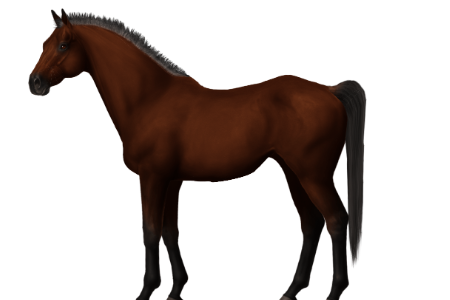 High expression
High expression
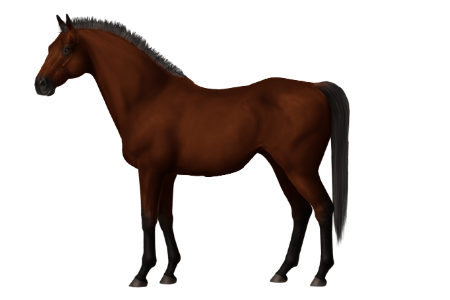 Normal expression
Normal expression
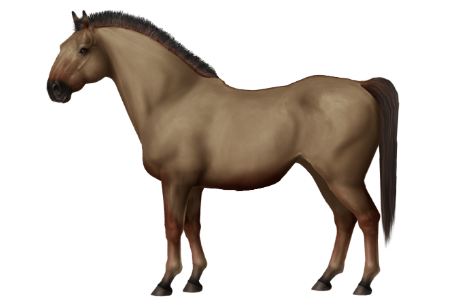 Low expression
Low expression
As on normal manes.
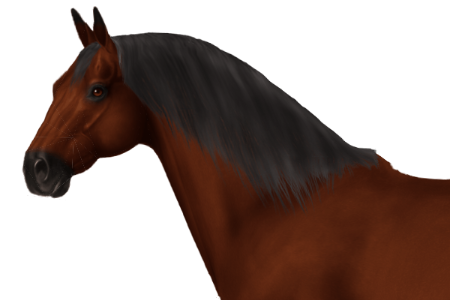 High expression
High expression
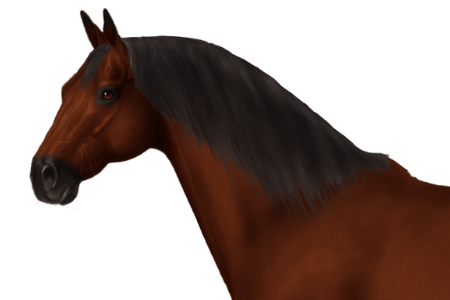 Normal expression
Normal expression
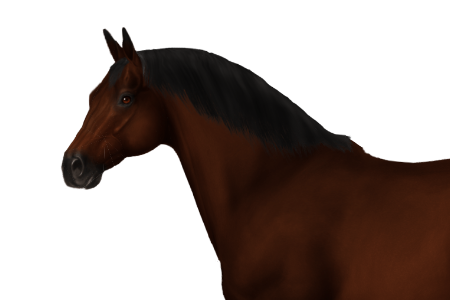 Low expression
Low expression
Fluffy mane
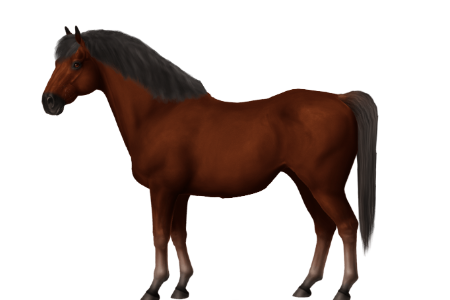 High expression
High expression
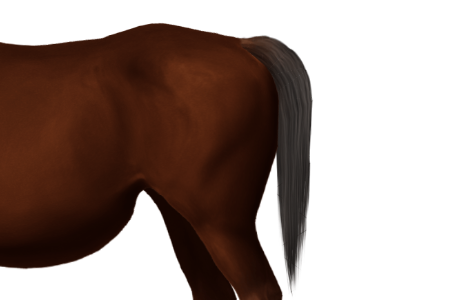 Carryover
Carryover
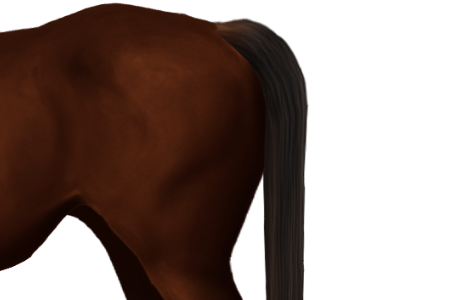 No carryover
No carryover

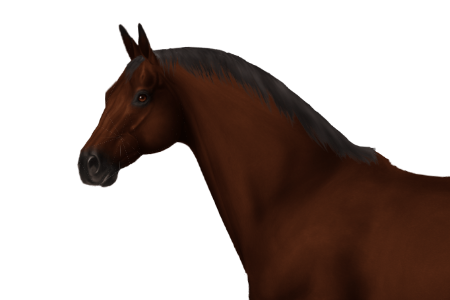 AC Arabian
AC Arabian
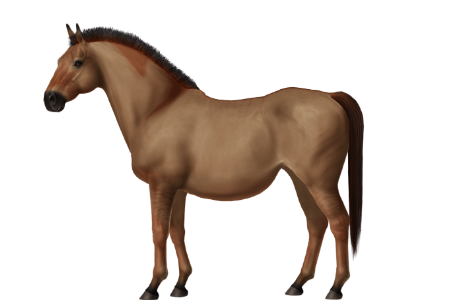
Sire has an obvious 'plume' mane and the dame doesn't nor carry the genes for it.
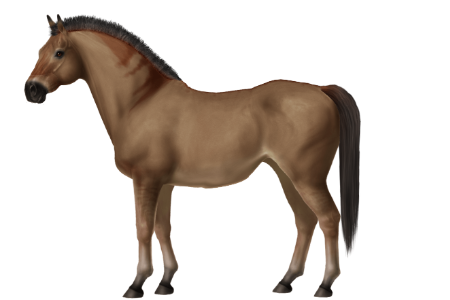
Various shades of dun like this boy at least still show it so far.
This is the 'plume' mane horse.It's a 'plume' coloration that appears in ancient-style horses (most often found in prze horses). Or that's what we've concluded as far as we can.
It does seem to appear in some of the other breeds around here. Neither one of us were able to pinpoint much about it, but neither one of us were really working on it, just discussing it. http://www.horseworldonline.net/forum/v ... 13&t=16131

As am looking to make a line of these horses decided to do a bit of a study on the coloration. BlackOak2 asked a few questions on the above linked post.
To a degree yes.Can this gene spread to cover more of the mane?
 High expression
High expression Normal expression
Normal expression Low expression
Low expressionAs on normal manes.
 High expression
High expression Normal expression
Normal expression Low expression
Low expressionFluffy mane
 High expression
High expressionI personally refer to it as 'carry over'. The tail expression seems to be influenced by further genetics potentially associated with the 'white' leg genes. Horses without the tail carryover lack the paler legs but still possess the plume mane.Does it appear in the tail? Or can it?
 Carryover
Carryover No carryover
No carryoverIf I remember correctly been found in AC Arabians, Barbs & Belgians at least.What AC horse breeds affect it and how?

 AC Arabian
AC ArabianHaven't seen anything yet.Do the AC horse breeds have any different versions of plume? (Prez horses do also have plume, but I don't recall anything else specfically)
Recessive.Is it recessive or dominant?

Sire has an obvious 'plume' mane and the dame doesn't nor carry the genes for it.
Would say incomplete. As stated above with the carry over on tails you can still find 'plume' manes without the tail coloring.Is there a co-dominance or even an incomplete?
Will be working on that.Does it appear the same in all the base colors, or does it not appear in certain ones? (dilutions generally act the same as their base, so when we figure the base out, the dilutions can be figured out closely)

Various shades of dun like this boy at least still show it so far.
Last edited by Gaagii on Wed May 22, 2019 3:40 pm, edited 3 times in total.
Occasional Purchaser of Upgrades/Pony Tokens (temporarily closed)
Plume Horse Association
ZaRHBR Member, MRA Member
Gaagii (#88314) & Craven (#88478)
Plume Horse Association
ZaRHBR Member, MRA Member
Gaagii (#88314) & Craven (#88478)
-
BlackOak2
- Premium

- Posts: 10570
- Joined: Sat Jan 30, 2016 12:41 am
- Visit My Farm
Re: Color Study ('plume' mane - odd pale/two-toned manes)
Post by BlackOak2 »
Gorgeous! And very informative.Gaagii wrote:....
Thank you for sharing!
I'll be looking forward to seeing this when and if you release them for sale to the community.
I think I may want to add this gene into my leopard tarpan herd sometime in the future, it'll be interesting to see what varnish mixed in would make it look like.
Don't forget to check it out!
Quick Start Guide For Newbies
Link to additional information.
BlackOak2's Quick-Links
Quick Start Guide For Newbies
Link to additional information.
BlackOak2's Quick-Links
-
Gaagii
- Posts: 277
- Joined: Mon May 21, 2018 9:28 pm
- Visit My Farm
Re: Color Study ('plume' mane - odd pale/two-toned manes)
Post by Gaagii »
Thanks. I think I covered everything found so far. And yes will, at some point, offer to others.BlackOak2 wrote: Gorgeous! And very informative.
Thank you for sharing!
I'll be looking forward to seeing this when and if you release them for sale to the community.
That would be interesting.BlackOak2 wrote:I think I may want to add this gene into my leopard tarpan herd sometime in the future, it'll be interesting to see what varnish mixed in would make it look like.
Occasional Purchaser of Upgrades/Pony Tokens (temporarily closed)
Plume Horse Association
ZaRHBR Member, MRA Member
Gaagii (#88314) & Craven (#88478)
Plume Horse Association
ZaRHBR Member, MRA Member
Gaagii (#88314) & Craven (#88478)
-
BlackOak2
- Premium

- Posts: 10570
- Joined: Sat Jan 30, 2016 12:41 am
- Visit My Farm
Re: Color Study ('plume' mane - odd pale/two-toned manes)
Post by BlackOak2 »
I think so as well. I've bred a slow varnish into my tarpans (it took a long while), so although they change color, most of them retain much of their shading through their teen years. I wonder what that high expression plume and the carry over, as well as the fetlock silvering would influence... whether the 'plume' would keep, whether the varnish would switch it to darker shade as the varnish silvering changes the darker to lighter...Gaagii wrote:
That would be interesting.
It's really an interesting thought.
In fact, I have a varnish only mare and stud (no visible snowflakes or blankets), that might do a better job of investigating. But their genes are relatively unknown. I bred them for quests and what I have is what their ancestors passed on.
Don't forget to check it out!
Quick Start Guide For Newbies
Link to additional information.
BlackOak2's Quick-Links
Quick Start Guide For Newbies
Link to additional information.
BlackOak2's Quick-Links
-
Gaagii
- Posts: 277
- Joined: Mon May 21, 2018 9:28 pm
- Visit My Farm
Re: Color Study ('plume' mane - odd pale/two-toned manes)
Post by Gaagii »
I imagine it took a while to get 'slow' varnish. I assume varnish may lighten everything though could be wrong.BlackOak2 wrote:I think so as well. I've bred a slow varnish into my tarpans (it took a long while), so although they change color, most of them retain much of their shading through their teen years. I wonder what that high expression plume and the carry over, as well as the fetlock silvering would influence... whether the 'plume' would keep, whether the varnish would switch it to darker shade as the varnish silvering changes the darker to lighter...
It's really an interesting thought.
In fact, I have a varnish only mare and stud (no visible snowflakes or blankets), that might do a better job of investigating. But their genes are relatively unknown. I bred them for quests and what I have is what their ancestors passed on.
Occasional Purchaser of Upgrades/Pony Tokens (temporarily closed)
Plume Horse Association
ZaRHBR Member, MRA Member
Gaagii (#88314) & Craven (#88478)
Plume Horse Association
ZaRHBR Member, MRA Member
Gaagii (#88314) & Craven (#88478)
-
BlackOak2
- Premium

- Posts: 10570
- Joined: Sat Jan 30, 2016 12:41 am
- Visit My Farm
Re: Color Study ('plume' mane - odd pale/two-toned manes)
Post by BlackOak2 »
It took forever. Just as long as getting the leopard pattern to extend through the body, neck and to start on the head, on the black-based colors (bay, brown & black). I haven't yet found where the slow varnish came from either. All I know (all we know really), is that AC tarpans and shetlands both carry some of the fastest varnishing genes.Gaagii wrote:I imagine it took a while to get 'slow' varnish. I assume varnish may lighten everything though could be wrong.BlackOak2 wrote:I think so as well. I've bred a slow varnish into my tarpans (it took a long while), so although they change color, most of them retain much of their shading through their teen years. I wonder what that high expression plume and the carry over, as well as the fetlock silvering would influence... whether the 'plume' would keep, whether the varnish would switch it to darker shade as the varnish silvering changes the darker to lighter...
It's really an interesting thought.
In fact, I have a varnish only mare and stud (no visible snowflakes or blankets), that might do a better job of investigating. But their genes are relatively unknown. I bred them for quests and what I have is what their ancestors passed on.
Varnish is an unusual gene in that it makes dark areas over time turn white, while white areas turn black and at the same time, it's not consistent overall. It changes it's affects when paired with dun and when paired with extreme sooty causes some really brilliant and defined color effects.
There was one I linked into the favorites post that shows a good varnish and sooty combination:
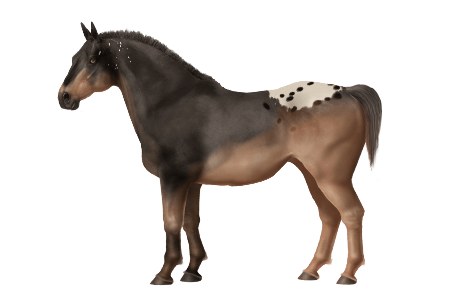
Varnish affected half the horse with sooty, but left the other half almost entirely alone.
So pairing the varnish with this plume-like gene is certainly attractive and either lightening everything or darkening... or causing something entirely different.. Hehe!
I'll be putting that as a forthcoming project, unless you beat me to it!
So what are we officially calling it? If it's like this plume gene, but doesn't appear to actually be this plume gene, what should we call it here on HWO?
Don't forget to check it out!
Quick Start Guide For Newbies
Link to additional information.
BlackOak2's Quick-Links
Quick Start Guide For Newbies
Link to additional information.
BlackOak2's Quick-Links
-
Gaagii
- Posts: 277
- Joined: Mon May 21, 2018 9:28 pm
- Visit My Farm
Re: Color Study ('plume' mane - odd pale/two-toned manes)
Post by Gaagii »
Thanks for the explanation I don't really play with varnish but do know ACs are pretty fast for changing color. And if pale is darkened + changes with dun that'd be rather interesting.BlackOak2 wrote:It took forever. Just as long as getting the leopard pattern to extend through the body, neck and to start on the head, on the black-based colors (bay, brown & black). I haven't yet found where the slow varnish came from either. All I know (all we know really), is that AC tarpans and shetlands both carry some of the fastest varnishing genes.Gaagii wrote:
I imagine it took a while to get 'slow' varnish. I assume varnish may lighten everything though could be wrong.
Varnish is an unusual gene in that it makes dark areas over time turn white, while white areas turn black and at the same time, it's not consistent overall. It changes it's affects when paired with dun and when paired with extreme sooty causes some really brilliant and defined color effects.
There was one I linked into the favorites post that shows a good varnish and sooty combination:
Varnish affected half the horse with sooty, but left the other half almost entirely alone.
So pairing the varnish with this plume-like gene is certainly attractive and either lightening everything or darkening... or causing something entirely different.. Hehe!
So what are we officially calling it? If it's like this plume gene, but doesn't appear to actually be this plume gene, what should we call it here on HWO?
But do you think this "slow" gene may have just been a lucked upon recessive gene? Or something incomplete maybe?
lol. Maybe. I wanna try other bases (got some black ac horses) too.BlackOak2 wrote:I'll be putting that as a forthcoming project, unless you beat me to it!
Well it's called midtstol for Fjords. But I guess plume for right now until actual plume is added/breedable?BlackOak2 wrote: So what are we officially calling it? If it's like this plume gene, but doesn't appear to actually be this plume gene, what should we call it here on HWO?
Occasional Purchaser of Upgrades/Pony Tokens (temporarily closed)
Plume Horse Association
ZaRHBR Member, MRA Member
Gaagii (#88314) & Craven (#88478)
Plume Horse Association
ZaRHBR Member, MRA Member
Gaagii (#88314) & Craven (#88478)
-
BlackOak2
- Premium

- Posts: 10570
- Joined: Sat Jan 30, 2016 12:41 am
- Visit My Farm
Re: Color Study ('plume' mane - odd pale/two-toned manes)
Post by BlackOak2 »
It's entirely possible for it to be recessive or incomplete. Rather I think it's a sliding scale type of a gene, either the more change genes you have, the faster it changes, or vice versa. For instance, AC horses start with 25 out of a max of 30 change genes and one has to work toward less then 10 to have the slow varnish.Gaagii wrote:
Thanks for the explanation I don't really play with varnish but do know ACs are pretty fast for changing color. And if pale is darkened + changes with dun that'd be rather interesting.
But do you think this "slow" gene may have just been a lucked upon recessive gene? Or something incomplete maybe?
I say that because there are Lp horses that will actually begin to varnish on their first birthday, the day they turn one year. There has even been cases in my herd that the varnish will begin to form at 10 months (the spots hidden under solid parts of the coat begin to reveal themselves). After a short search, I can't seem to find the horse that showed this.
So I know there is something else at work besides the simple on/off switch for varnish. Generally speaking, varnish begins to appear during their first year after the foal coat is blown and will stop changing the coat at about 15 years. However, by the time the horse is 5 (in most cases), the varnish is already so extreme that the original horse color appears to be a type of silver grulla with no dapples.
In my herd, they'll start to show some hidden spots (begin to varnish) sometime after their first year but before their fifth. However, more and more of my herd is retaining their original coat color, albeit a bit washed out version of it. One can still tell the horse was born a bay or a brown:
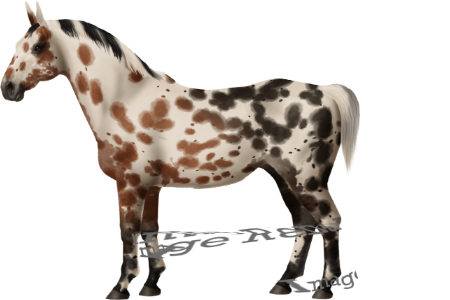
**Note that both of these adult pictures, the above mare and the below stallion are taken at similar ages, the mare is 15, the stallion is 13.
She has changed only a little in her 15 years, although she has some sooty on her back half. But her hidden spots (seen at her chest and her flank areas), took their time coming in. She's a decent example of a slow varnish.
Unlike this one, that showed his spots at a year, a month and 2 weeks:
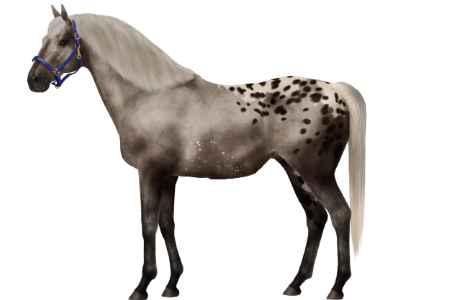

That will definitely make a unique-look. A silver-maned horse with a pitch-black body.Gaagii wrote:lol. Maybe. I wanna try other bases (got some black ac horses) too.
Black has been notorious for other genes (Leopard is an excellent example), so I also wonder if you'll have the same stubbornness of resistance to this gene as we have had when pairing black with other genes.
So midtstol is not plume?Gaagii wrote:
Well it's called midtstol for Fjords. But I guess plume for right now until actual plume is added/breedable?
So I understand, Plume would be considered the shortened version of gulastra's plume, but midtstol is not gulastra's plume?
These are two distinctly different but similar in expression, genes?
I think that might work, just to call it plume and if the galastra's plume does come in, then it would still be easy to distinguish them by midtstol plume versus gulastra's plume (Mp versus Gp).
Don't forget to check it out!
Quick Start Guide For Newbies
Link to additional information.
BlackOak2's Quick-Links
Quick Start Guide For Newbies
Link to additional information.
BlackOak2's Quick-Links
-
Gaagii
- Posts: 277
- Joined: Mon May 21, 2018 9:28 pm
- Visit My Farm
Re: Color Study ('plume' mane - odd pale/two-toned manes)
Post by Gaagii »
Quite interesting & informative. Definitely something to know if play with varnish.BlackOak2 wrote:It's entirely possible for it to be recessive or incomplete. Rather I think it's a sliding scale type of a gene, either the more change genes you have, the faster it changes, or vice versa. For instance, AC horses start with 25 out of a max of 30 change genes and one has to work toward less then 10 to have the slow varnish.Gaagii wrote:
Thanks for the explanation I don't really play with varnish but do know ACs are pretty fast for changing color. And if pale is darkened + changes with dun that'd be rather interesting.
But do you think this "slow" gene may have just been a lucked upon recessive gene? Or something incomplete maybe?
I say that because there are Lp horses that will actually begin to varnish on their first birthday, the day they turn one year. There has even been cases in my herd that the varnish will begin to form at 10 months (the spots hidden under solid parts of the coat begin to reveal themselves). After a short search, I can't seem to find the horse that showed this.
So I know there is something else at work besides the simple on/off switch for varnish. Generally speaking, varnish begins to appear during their first year after the foal coat is blown and will stop changing the coat at about 15 years. However, by the time the horse is 5 (in most cases), the varnish is already so extreme that the original horse color appears to be a type of silver grulla with no dapples.
In my herd, they'll start to show some hidden spots (begin to varnish) sometime after their first year but before their fifth. However, more and more of my herd is retaining their original coat color, albeit a bit washed out version of it. One can still tell the horse was born a bay or a brown:
**Note that both of these adult pictures, the above mare and the below stallion are taken at similar ages, the mare is 15, the stallion is 13.
She has changed only a little in her 15 years, although she has some sooty on her back half. But her hidden spots (seen at her chest and her flank areas), took their time coming in. She's a decent example of a slow varnish.
Unlike this one, that showed his spots at a year, a month and 2 weeks:
Well I bred three black ac turkmenes to horses with the plume. All foals were bay/brown & no plume.BlackOak2 wrote:That will definitely make a unique-look. A silver-maned horse with a pitch-black body.Gaagii wrote:lol. Maybe. I wanna try other bases (got some black ac horses) too.
Black has been notorious for other genes (Leopard is an excellent example), so I also wonder if you'll have the same stubbornness of resistance to this gene as we have had when pairing black with other genes.
Gulastra may or may not be an odd sabino marking irl & not an actual 'plume' like that found in przewalski or fjords. No one's seems to be really sure what it is.BlackOak2 wrote:So midtstol is not plume?Gaagii wrote:
Well it's called midtstol for Fjords. But I guess plume for right now until actual plume is added/breedable?
So I understand, Plume would be considered the shortened version of gulastra's plume, but midtstol is not gulastra's plume?
These are two distinctly different but similar in expression, genes?
I think that might work, just to call it plume and if the galastra's plume does come in, then it would still be easy to distinguish them by midtstol plume versus gulastra's plume (Mp versus Gp).
Midtsol is something else entirely from gulastra & like the 'plume' occasionally seen in przewalskis. In Norwegian it is taken to mean 'mid-section' due to the way in which the manes come out on the Fjord horse. The coloring is actually in the 'middle' following the dorsal strip & can occasionally look as if vertical two-toned simply by how the mane's trimmed.

https://www.horsejournals.com/norwegian ... e-all-ages
For the game I think plume for now and then Mp / Gp when galastra's plume is included.
Occasional Purchaser of Upgrades/Pony Tokens (temporarily closed)
Plume Horse Association
ZaRHBR Member, MRA Member
Gaagii (#88314) & Craven (#88478)
Plume Horse Association
ZaRHBR Member, MRA Member
Gaagii (#88314) & Craven (#88478)
-
BlackOak2
- Premium

- Posts: 10570
- Joined: Sat Jan 30, 2016 12:41 am
- Visit My Farm
Re: Color Study ('plume' mane - odd pale/two-toned manes)
Post by BlackOak2 »
Gaagii wrote:
Well I bred three black ac turkmenes to horses with the plume. All foals were bay/brown & no plume.
Got it!Gaagii wrote:
Gulastra may or may not be an odd sabino marking irl & not an actual 'plume' like that found in przewalski or fjords. No one's seems to be really sure what it is.
Midtsol is something else entirely from gulastra & like the 'plume' occasionally seen in przewalskis. In Norwegian it is taken to mean 'mid-section' due to the way in which the manes come out on the Fjord horse. The coloring is actually in the 'middle' following the dorsal strip & can occasionally look as if vertical two-toned simply by how the mane's trimmed.
https://www.horsejournals.com/norwegian ... e-all-ages
For the game I think plume for now and then Mp / Gp when galastra's plume is included.
And also, very nice horse pic, great example of that cut.
This is great! We have yet another gene identified and 'easily' workable... insofar as we know it exists and can be genetically linked.
Again, thank you for this work and also for sharing it.
Don't forget to check it out!
Quick Start Guide For Newbies
Link to additional information.
BlackOak2's Quick-Links
Quick Start Guide For Newbies
Link to additional information.
BlackOak2's Quick-Links
Jump to
- General Discussion
- ↳ Announcements
- ↳ Weekly Development Updates
- ↳ General Chit Chat
- ↳ Contests
- ↳ What Colour Is My Horse?
- ↳ Comments and Suggestions
- ↳ Suggestions Archive
- ↳ Breeding Communities
- ↳ Farm Logs
- Marketplace
- ↳ Horses for Sale
- ↳ Stallions at Stud
- Knowledgebase & Guides
- ↳ Gameplay Questions & Help
- ↳ Guides & How To
- Technical
- ↳ Change Log v3
- Guest Discussions
- ↳ Public Questions & Answers
